“Slow down, you move too fast,
Got to make the moment last.”
Simon and Garfunkel’s 59th Street Bridge song is stuck in my head these days.
It seems like our world is moving faster and faster. Covid-19 slowed us all down a little, but life is still speeding by faster than most of us would like. Now even from home, our once sacred space, we are more connected, can talk to more people at once, do more things at once.
It can be overwhelming.
That is one reason why I wander to our mountains. To wind down, to disconnect and to be present.
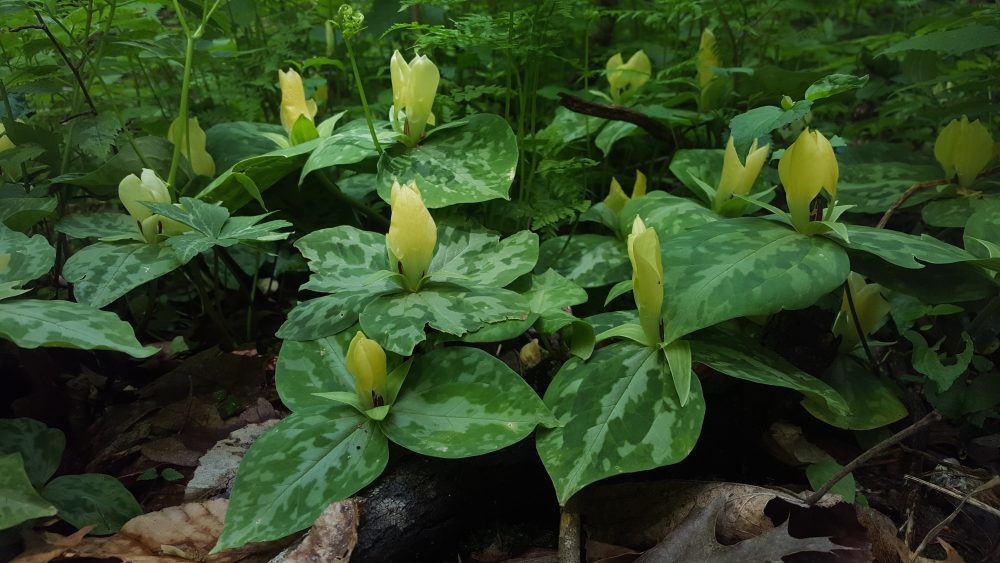
One of my favorite spring beacons is the trillium.
Trilliums usually begin blooming just after trout lilies and just before dogwoods. The trillium is named for its pattern of threes: three leaves, three sepals and three petals.
We have at least 6 species of trillium in our area, so you are sure to have seen at least one along the way. There are many fun and familiar names for them like Sweet Betsy, Toadshade or Wake Robins. There are also some not so fun names, such as Stinking Benjamin and Bloody Butcher.
Common names often tell the story of how people connect to our wild world. One species of trillium was used as a tincture to initiate labor, giving it the name birthroot. Wake Robins probably bloomed as the robins were waking up for spring.
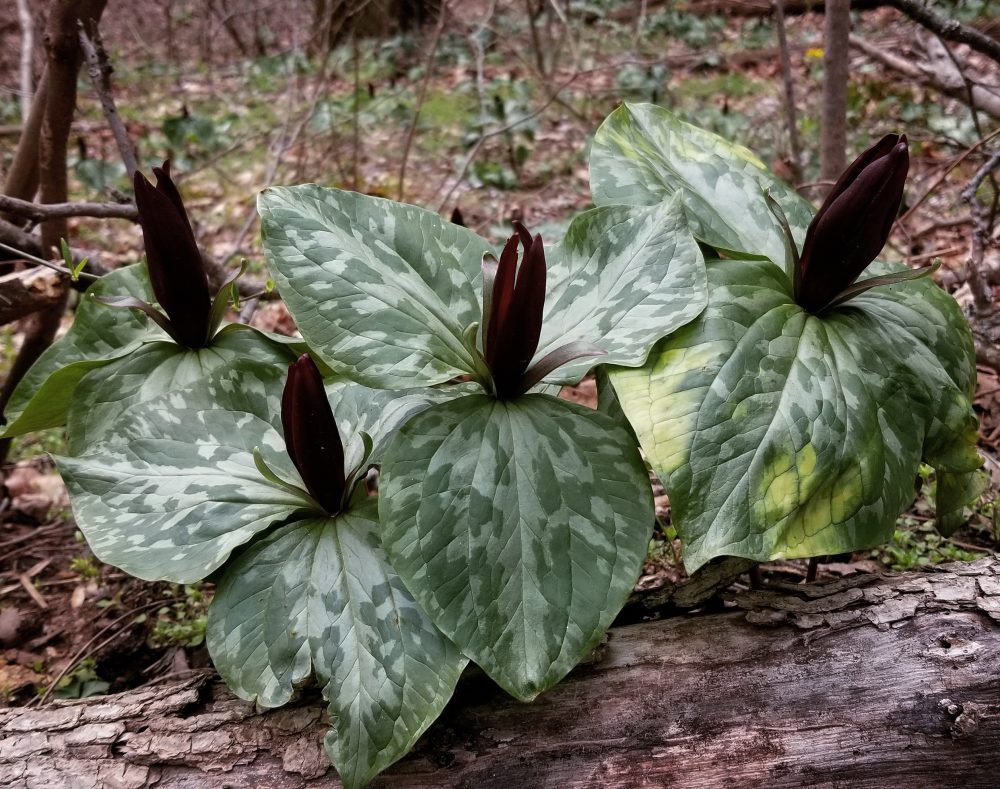
The most commonly seen trillium in our area is probably Trillium cuneatum, or Sweet Betsy.
This trillium is a deep burgundy color and smells a lot like fermented bananas at its prime. This is because the flower is hoping to attract its prime pollinators, flies and beetles.
What better way is there to get their attention than to smell a bit like our compost piles?
If you happen upon a forest floor filled with ripe, sun-warmed Sweet Betsys, you will certainly think you are near a compost pile.
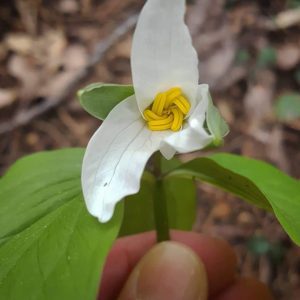
Trilliums give us a chance to slow down and wait.
They are not to be rushed. They thrive on the slow and steady pace.
If you want to watch a trillium grow from seed, you must be patient.
In nature, ants are the trillium farmers, dispersing the seeds as they carry them underground. The trillium actually hires the ants by attaching their pay to the seeds. The seeds have a special fatty structure called elaiosomes that the ants want.
After they take their pay, they toss the seed aside, where it will patiently wait up to two years just to germinate. Once the first leaf comes up it can be another five to seven years before you get a flower.
If you look at a healthy population of trillium you will see some with one leaf, some with two and some with three leaves but no flower yet.
Slow and steady.
It takes time to get to where they are going and they are not in a hurry. As much as ten years from when the seed was taken by the ant, the flowers finally appear.
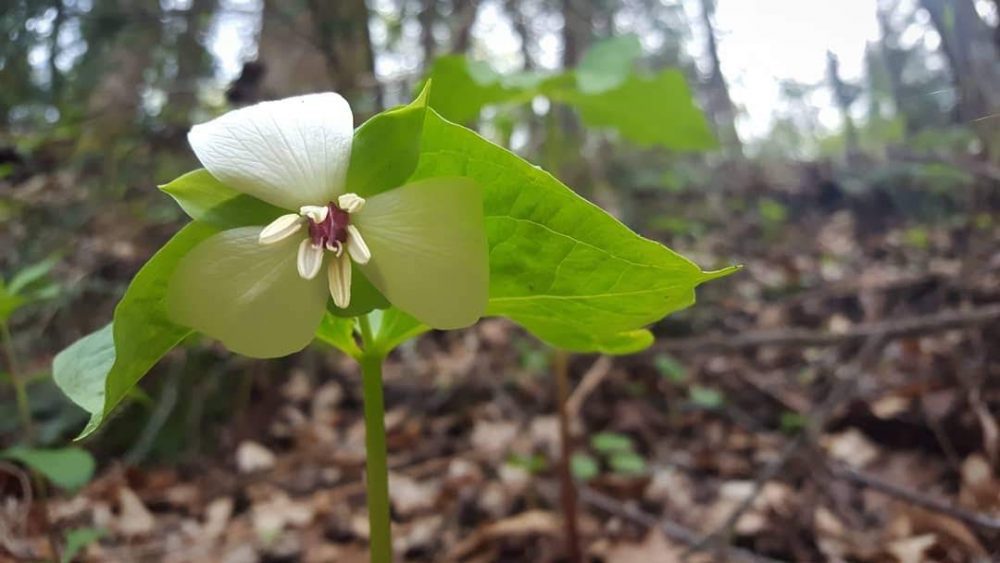
The reward for this slow life is longevity.
Trilliums aged from their rhizome scars by biologists have been found to be as much as 80 years old!
80 years of bringing in spring with the robins and the warblers.
80 years of abiding, rooted deep in their place.
80 years of being present.
So let us look to the trilliums to remember to slow down and to be present in our places.
Life will come and go whether we are in a hurry or not.
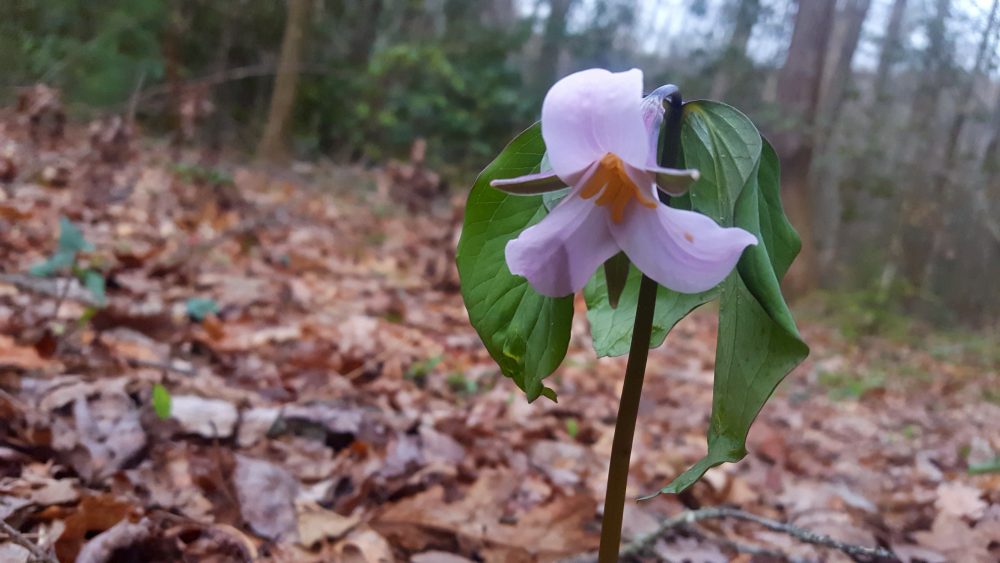
______________________________________
For more Wild Wanders by Tricia Kyzer, click right here.
Follow Tricia Kyzer on Instagram at Blue Wall Wanderer for more gorgeous adventures.




